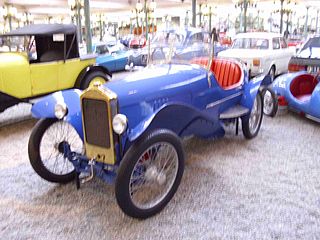Příbramská strojírna a slévárna was a Czech automobile manufacturer, a successor to the Stelka.
Marbais et Lasnier was a French manufacturer of automobiles.
M.Tholomé was an automobile manufacturer based on the north side of Paris between 1919 and 1922, which produced cyclecars.

Sénéchal was a French automobile manufacturer between 1921 and 1929.

Sima Violet was a French manufacturer of cyclecars between 1924 and 1929.
Zeiller & Fournier was a short-lived French automobile producer.
Cumbria Motors was a British cyclecar manufacturer based in Cockermouth (Cumberland) in 1914.
Hugh Kennedy & Company was a Scottish automobile manufacturer, known for the Ailsa model, from 1907 to 1910.
Dayton, Dayton Dandy, was a British automobile manufactured in 1922 by the Charles Day Manufacturing Co. Ltd. in the London Borough of Hackney W10. The Dandy was a Cyclecar with a single cylinder Blackburne engine producing 4 hp.
YEC was a British motor car. Approximately 50 cars were manufactured in Sheffield from 1907–1908.
WSC, Wholesale Supply Co. Ltd. was a Scottish automobile manufacturer, established in 1914 in Aberdeen. The cyclecar was marketed under the name of WSC with a V twin J.A.P. engine rated for taxation at 8 hp.
James Robertson was a British automobile manufacturer from 1915 to 1916 in Manchester. The Robertson Cyclecar had a V-2, twin-cylinder JAP engine rated at 8 bhp (6.0 kW).

Gordon, Gordon Armstrong, was a British cyclecar produced in Beverley Yorkshire by 'East-Riding Engineering' from 1912 to 1916. Production was halted by World War I.
Gordon, Gordon Cycle & Motor Company Ltd was a British manufacturer of bicycles and motor cars in 1903 and 1904. It was established on the Seven Sisters Road, north London.

The Gordon, made by Vernons Industries Ltd. based at Bidston, then in Cheshire, was a British three-wheeled motorcar produced from 1954 until 1958.
Willis was a British automobile marque that began and ended in 1913. It was manufactured by Finchley Place Garage in London.
Certus Gearless Company Ltd. was a British manufacturer of automobiles from 1907 to 1908 in London.
Rudolf Stelšovský, výroba automobilů was a Czech automobile manufacturer.
Česká automobilová společnost pro obchod a montáž motorových vozidel, formerly Bratři Rechzieglovi, was a Czech manufacturer of motorcycles and automobiles.

The Horley Motor & Engineering Co. Ltd was a British automobile manufacturer in Horley, Surrey, producing light vehicles between 1904 and 1909. The brand names were Horley and No Name. Horley collaborated with Lacoste & Battmann, the French supplier of vehicle components, assemblies and unbranded vehicles equipped with Aster, De Dion-Bouton or Mutel engines.





